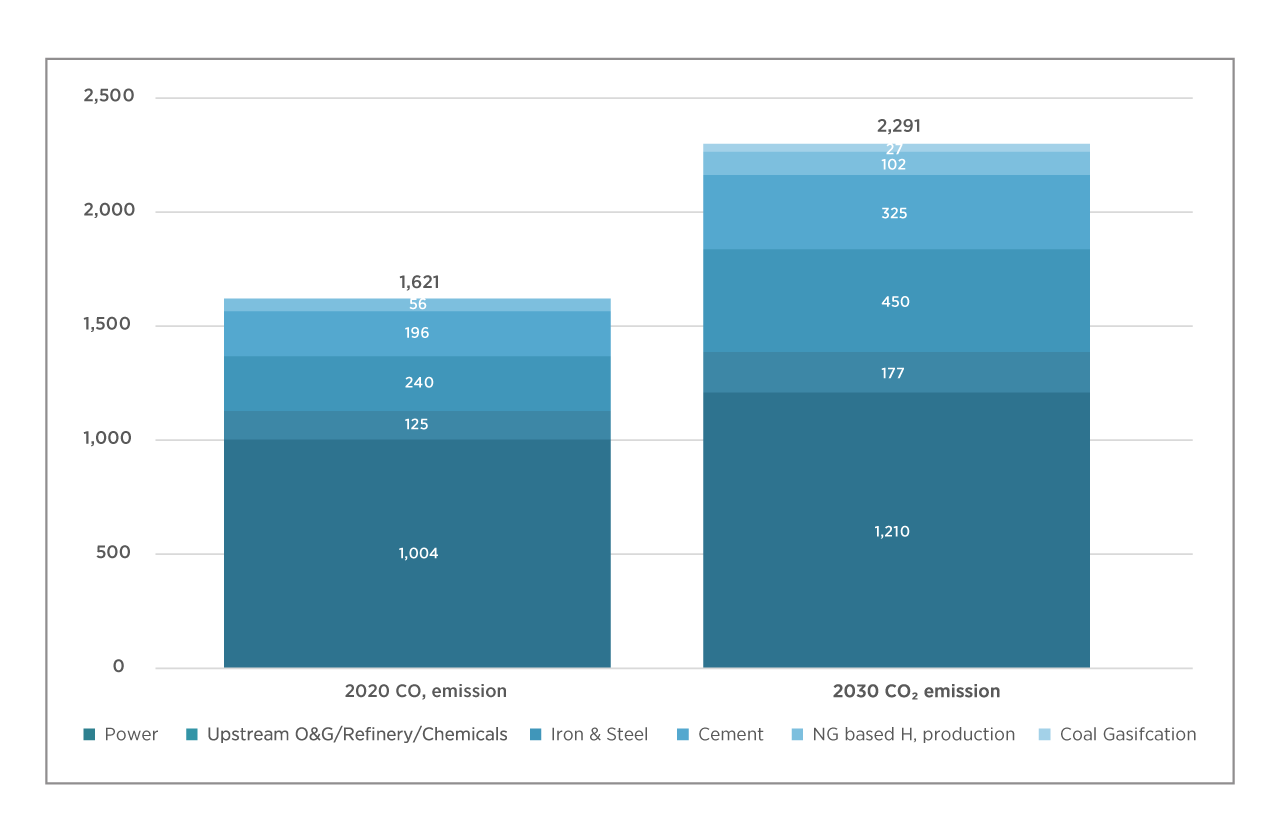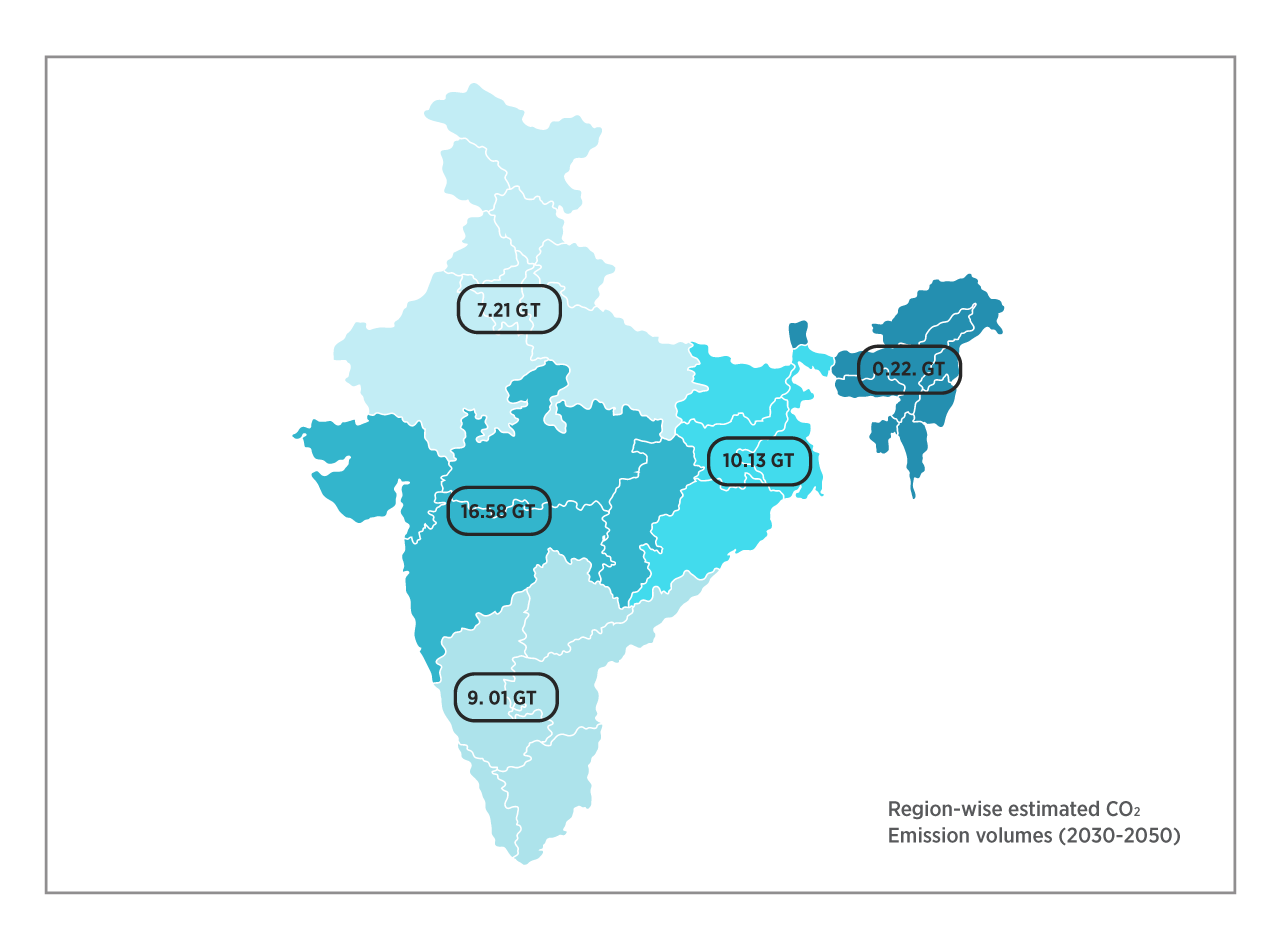Carbon Capture Utilization and Storage:
A Crucial Strategy for Mitigating Climate Change
Introduction
Carbon capture, utilization, and storage (CCUS) have come up as a critical strategy in the combat against climate change. Carbon capture, utilization, and storage (CCUS) is key to ensuring sustainable development and growth in India, particularly in producing clean products and energy, leading to a sustainable future. As global carbon emissions continue to rise, innovative approaches are needed to reduce greenhouse gas concentrations in the atmosphere and mitigate the impacts of climate change. CCUS technology offers a promising solution by capturing carbon dioxide (CO2) emissions from industrial processes and power plants, utilizing them in various applications, and storing them underground to prevent their release into the atmosphere.
The Niti Ayog published a report in November 2022 on CCUS titled “Carbon Capture, Utilization, and Storage Policy Framework and its Deployment Mechanism in India.” According to the report, major industries such as steel, cement, oil & gas, refineries, chemicals, hydrogen production, thermal power, and coal gasification will benefit significantly from CCUS technology, reducing their carbon footprints.
The article explores the importance of CCUS technology, its potential applications, and the challenges and opportunities associated with its implementation.
The Need for Carbon Capture Utilization and Storage
The burning of fossil fuels for energy production and industrial processes is the primary source of CO2 emissions, which contribute significantly to global warming and climate change.
Despite efforts to transition to renewable energy sources, fossil fuels continue to dominate the global energy mix, driving the need for effective carbon mitigation strategies. India’s power and industrial sectors accounted for approximately 1,600 million tonnes per annum (mtpa) of CO2 emissions, consulting about 60% of the total emissions of 2,600 mtpa in 2020. Fuelled by economic growth across various sectors and rapid urbanization, emissions from these sources are projected to rise to nearly 2,300 mtpa by 2030. (Fig.1)

Fig. 1: Sector-wise CO2 Emissions (in mtpa)
India’s per capita GHG emission is 2.4 tCO2e (2020) – less than 40% of the world average whereas Global per capita GHG emissions is 6.3 tCO2e (2020). The present CO2 level in atmosphere is ~ 410 ppm and the global average atmospheric CO2 was ~ 419.3±0.1 ppm in 2023. Consequently, the capture and abatement of emissions from these sectors become imperative. CCUS technology offers a viable pathway to reduce CO2 emissions while supporting economic growth and energy security.
Applications of Carbon Capture Utilization
Transforming Emissions into Resources Captured CO2 can be utilized in various applications, thereby turning emissions into valuable resources. For instance, CO2 can be used in enhanced oil recovery (EOR) to increase oil production while permanently storing CO2 underground. Additionally, CO2 can be utilized in the production of chemicals, polymers, and construction materials, offering a sustainable alternative to traditional manufacturing processes. The Global CCS Institute reports that over 40 million tonnes of CO2 are currently utilized annually in CCUS projects worldwide. In India, major industries such as Tata Steel, JSW, National Thermal Power Corporation (NTPC) and others have taken the initiative to capture the carbon and use it in several activities. For instance, JSW has set up a plant to capture 100 tonnes of CO2 per day and the liquid CO2 produced will be used in the beverage industry, National Thermal Power Corporation (NTPC) has also set up a pilot project to capture 20 tonnes of CO2 per day for making urea etc.
Carbon Storage
Safely Sequestering Emissions Underground Once captured, CO2 can be stored underground in geologic formations, preventing its release into the atmosphere. Geological storage sites include depleted oil and gas reservoirs, saline aquifers, and deep geological formations. As Shri V K Saraswat, member of Niti Ayog said during a webinar, India's estimated CO2 storage potential, standing at an impressive 600 billion tonnes, is a significant asset in the global effort to combat climate change. This vast potential is distributed across various regions, each playing a crucial role in the country's carbon sequestration strategy(Fig.2):

Fig. 2: Region-wise Storage Clusters in India
- Northern Region:With a storage potential of 7.65 gigatonnes (Gt) of CO2, the Northern Region contributes sustainably to India’s overall carbon storage capacity.
- Western Region: : Boasting a remarkable storage potential of 388.9 Gt of CO2, the Western Region emerges as a key player in carbon sequestration efforts, owing to its diverse ecosystems and geographical features.
- Eastern Region:With a storage potential of 80.58 Gt of CO2, the Eastern Region offers significant opportunities for carbon sequestration, underscored by its rich biodiversity and forest cover.
- North-Eastern Region: Despite its relatively smaller size compared to other regions, the North-Eastern Region holds considerable potential, with 47.2 Gt of CO2 storage capacity, attributed to its dense forests and unique ecosystems.
- Southern Region:With a storage potential of 76.3 Gt of CO2, the Southern Region contributes significantly to India's carbon sequestration efforts, benefiting from its extensive forest cover and diverse landscape.
This distribution highlights the importance of adopting region-specific approaches to carbon sequestration and climate mitigation strategies. Leveraging the natural carbon sinks present in these regions, such as forests, wetlands, and agricultural lands, can play a pivotal role in achieving India's climate goals while simultaneously enhancing biodiversity and promoting sustainable development
Challenges and Opportunities
While CCUS technology holds immense potential for reducing CO2 emissions, several challenges must be addressed to accelerate its deployment. These include high costs, technological barriers, regulatory uncertainty, and public acceptance. However, recent advancements in CCUS technology, along with supportive policies and incentives, are driving progress in this field. Governments, industries, and research institutions worldwide are collaborating to develop innovative CCUS solutions and overcome existing barriers. Moreover, the growing focus on decarbonization and the transition to a low-carbon economy presents significant opportunities for CCUS deployment and investment.
Conclusion
Carbon capture, utilization, and storage represent a vital component of global efforts to combat climate change and achieve net-zero emissions targets. By capturing and storing CO2 emissions, CCUS technology can help mitigate the impacts of climate change while supporting economic growth and energy security. However, realizing the full potential of CCUS will require continued investment, innovation, and collaboration across government, industry, and academia. With concerted efforts and strategic investments, CCUS technology can play a transformative role in the transition to a sustainable and carbon-neutral future.
About the Author
Rakhi Sharma is a sustainability professional with seven years of
immersive experience in the field. Her expertise spans a wide
spectrum, including energy efficiency, solar energy, e-mobility,
carbon credits, carbon capture, utilization, and storage (CCUS), along
with her adeptness in climate risk management, market research, policy
advocacy, and project management. Her passion for sustainable
development is palpable, driving her unwavering commitment to
contribute meaningfully to climate change initiatives. With a
deep-seated dedication and a wealth of diverse experiences, she stands
poised to make a significant impact in shaping a more sustainable
future for generations to come.
Contact Ms. Rakhi Sharma at rakhi.ifge@gmail.com


